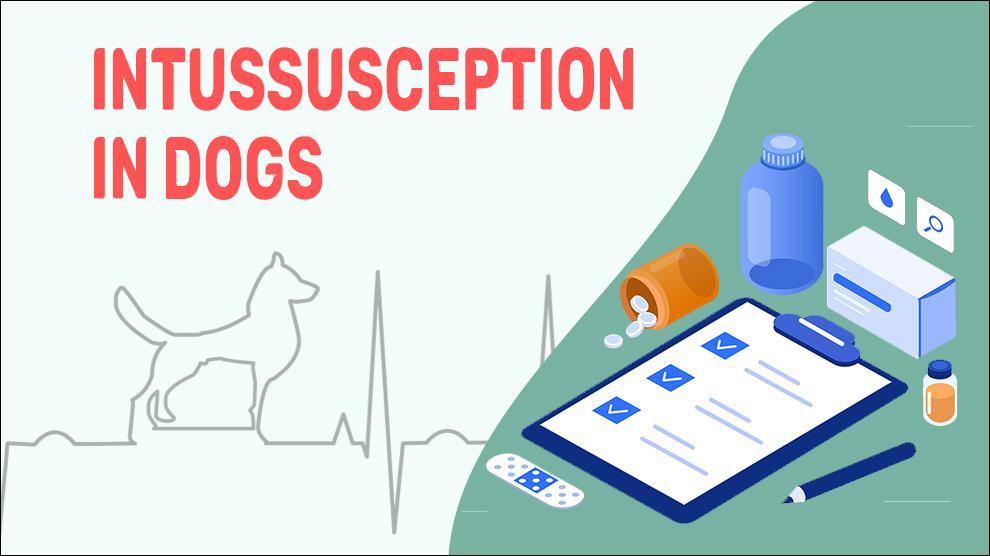Intussusception (intestinal invagination) happens when one part of the bowel is invaginated into the next intestinal lumen, much like the pieces of a telescope collapsing together, causing bowel obstruction.
When this "telescoping" happens, the flow of food and fluids through the bowel can get blocked resulting in swelling and bleeding of the intestines. The blood supply will be cut off to the affected part of the intestine and that part of the bowel can die.
Intussusception is a relatively uncommon gastrointestinal problem and it can occur anywhere in the GI tract. The most happening locations are where the small intestine joins the large intestine or in the middle of the small intestine (jejunum). ‘The telescoping effect’ can be deadly because it can cause partial or complete gastrointestinal blockage or cut off blood supply to the trapped portion of GI tissue and the affected tissue can become ischemic and die.
In most cases, the condition requires surgery for treatment while in some dogs it resolves spontaneously with no known explanation.
Whenever you see the signs of intussusception in your dog, you should consult your veterinarian right away without any delay.
Symptoms Of Intussusception
High in the intestinal tract Intussusception
- Abdominal pain
- Abdominal distension/ abdominal mass
- Diarrhea (described as ‘current jelly’)
- Hunched back
- Labored breathing
- Loss of appetite
- Vomiting (bloody or dark vomit with an odor of feces)
- Regurgitation
- Straining to defecate
Low in the intestinal tract Intussusception
- Anorexia
- Diarrhea (melena)
- Straining to defecate (tenesmus)
- Occasional Bloody vomit (hematemesis)
- Weight loss
Treatment Options For Intussusception
Exploratory laparotomy: opening the abdomen to determine the cause
Surgery: to manually adjust and fix the intussusceptions
Anastomosis: to resection the intestine and bowel
Enteroplication: intestines are held in an accordion-like fashion and sutured together to prevent recurrence
Anti-nausea medication, pain relief and Antibiotics will be administered as immediate comfort.
Home Remedies For Intussusception
Awareness about the risk factors is the best way to protect your pets from intussusceptions. Educate yourself about the signs and symptoms.
Recurrence occurs mostly after the first few weeks of the animal's surgery, so pet owners have to be more careful during this period.
Provide more water bowls and add more water in the dog food to keep your dog hydrated.
Get suggestions from your vet for an appropriate diet for the days following surgery or treatment.
Usually, the diet for the first several days will be small, easily digestible meals and the diet can return to normal depending on your dog's recovery.
Prevention Of Intussusception
There is no way to presume that your pet will ever suffer from an intussusception, however, there are a few things you can do to prevent the occurrence.
- Make sure your pet is free from parasites. Don’t forget to carry out annual fecal (stool checks and keep them on year-round parasite preventatives.
- Keep away all linear dangerous household items (e.g. dental floss, string, yarn ) from the pets.
- Vaccinate your dog against parvovirus. This has proven to be promising for the prevention of intussusceptions in some dogs.
- Snuff out your dog's counter-surfing activities and poke the nose at garbage bags.
- Lack of discretion in diet can be another cause of intussusceptions.
Affected Breeds Of Intussusception
There is no breed disposition.
Almost 80 percent of intussusception cases occur in puppies(under the age of one year old).
Additional Facts For Intussusception
Causes:
- Abdominal surgery
- Abrupt dietary changes
- Congenital collagen deficiency
- Complications of an abdominal hernia
- Infection (bacterial, viral, or protozoal)
- Disruption in normal motility function
- Gastric dilatation volvulus (bloat)
- Pyloric stenosis (common in brachycephalic breeds)
- Tumors
Diagnosis:
- Barium contrast radiography
- Abdominal Ultrasound
Mortality:
Intestinal intussusception surgical treatment offers an excellent prognosis but the potentially serious complications should be taken care of. The postoperative mortality rate is 5%.
Prognosis:
Relapse of intussusception takes place in 10 -25 percent of pets. The prognosis depends upon the age of the dog and the extent of damage and resection bowel and intestine.
When To See A Vet
Remember, intussusceptions should be addressed without any delay as it is a surgical emergency.
If your pet starts bloody vomiting or has bloody diarrhea, get to the vet clinic immediately.
Food Suggestions For Intussusception
- Switch temporarily to a Bland Diet- Boiled, plain chicken and rice or with Plain, cooked sweet potato with small amounts of canned pumpkin.
- Try sensitive stomach diets for dogs with plenty of fiber ingredients, low amounts of fat, and probiotics.
- Try an Elimination Diet/prescription diet to avoid exposure to food allergens
- Gradually switch over too easily digestible lean cuts of meat - (boiled and drained off excess fat)
- Keep plenty of water available on the floor and/or add water to the food, so your pup can stay hydrated.
Conclusion
Prevention of intussusception may be hard but supporting a healthy GI tract can help in many ways. Gradual dietary changes, regular use of intestinal parasite preventatives and taking care that your dog doesn't eat unwanted things can decrease the chances of occurrence to a greater level.

















